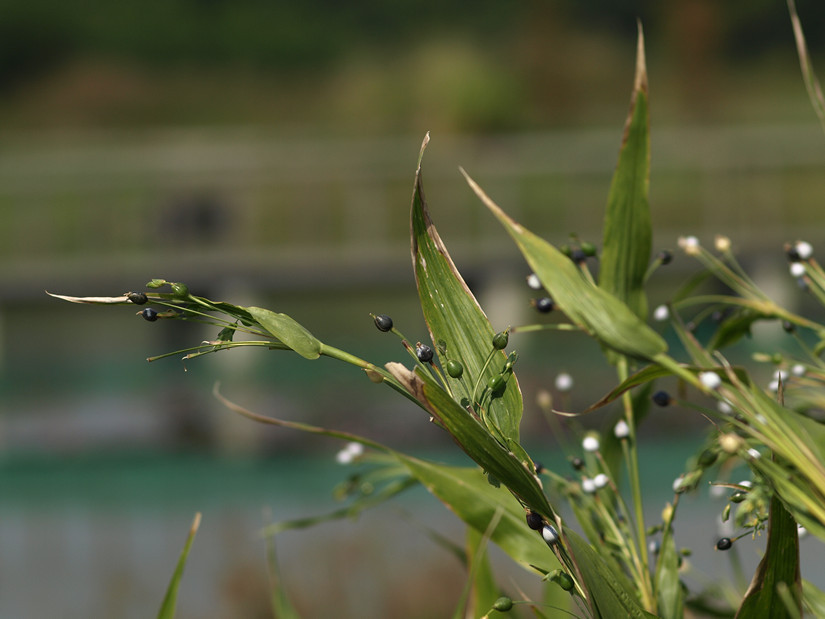October
Coix lacryma-jobi

In hot summer days many people will use Job's tear to prepare a drink, believing it has the Chinese medicinal power to 'clear heat' and 'eliminate dampness'. The grains of Job's tears can easily been bought from Chinese groceries or supermarkets, but have you ever seen the actual plant that bears the grain?Job's tears is the seed of the plant Coix lacryma-jobi. It has a long history of cultivation in China. It is an annual herb that belongs to the family of Poaceae, and is originated from East Asia, but it is now widely cultivated in other parts of the world. There are different varieties and cultivars of the plant.The plant grows to a height of 1-2m, and its shoots are clustered. The leaves are long lanceolate in shape, and 20-40cm long. The inflorescence grows on the upper part of the plant. Just like other plants of the grass family, the flowers of Job's tears are inconspicuous. They don't have showy petals or delicious nectar to attract insects, and they rely on wind for pollination. Whenever there is wind the drooping inflorescences sway gracefully like pendulums, dispersing the pollens along with the wind.Job's tears sets flowers and fruits in summer and autumn. The seeds are surrounded by a hard and shiny shell. They are shaped like drops of tear, giving it the English common name 'Job's tear', which is derived from a Bible story. The commercial product of Job's tears is prepared after harvesting, threshing, shelling and drying.One of the Chinese names of Job's tears is 'prayer beads plant'. The grains of hard shelled variety can be used to make necklaces and other handicrafts. Apart from food, Job's tears also has Chinese medicinal properties. There are even horticultural cultivars bearing ornamental values. Job's tears is a plant of multi-purposes indeed!You will see this plant in the paddy field of Wetland at Work next to the Wetland Discovery Centre.